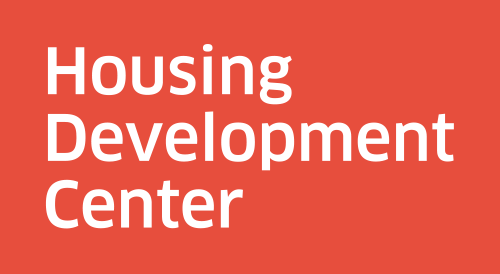Why Compliance Charts Are an Affordable Housing Owner’s Best Friend
In September, my colleague Emily and I led a half-day session with the first cohort of HDC’s Building Asset Management Solutions (BAMS) training program. It was a diverse group: cross-departmental teams representing seven housing and human-service providers across Oregon. But every participant played some part in operating or overseeing the financial health of an affordable-housing portfolio. And most, asked which part of the training session they found most valuable, gave top ranking to our walk-through of HDC’s compliance chart.
Why the love for an Excel template we use to help owners track funder requirements for individual affordable-housing properties? Probably because a compliance chart is a tool—like your favorite weeding implement or cloud-based task-tracking app—that makes a difficult but necessary chore so... much... easier. (Also, maybe my enthusiasm caught on; I get extremely jazzed when I talk about compliance.)
If your work involves financial oversight of affordable housing, you know what I’m talking about.
Affordable housing properties typically have many funding sources, each with its own requirements. For example, Funder A might require that a minimum number of resident households earn less than a certain percentage of area median income. Funder B might require that a certain number of housing units be set aside for a specific population. Funders A, B, C, and D might each set specific requirements regarding types and amounts of property insurance coverage, minimum annual reserve deposits, and so on. Different requirements apply for different periods of time.
Tracking all those requirements can be a challenge when you oversee multiple properties and juggle many urgent tasks. But it’s a responsibility that can be costly to ignore. Compliance failures cause big headaches and can even put a property’s ownership at risk. Conversely, effective compliance management can bring real financial benefits. That’s where a compliance chart comes in.
The compliance-chart template HDC shares with clients and training participants is an eight-sheet Excel workbook. It has tables to track payment terms for loans and equity investments, minimum reserve deposits by year, income-and-rent restrictions on apartment units, and other requirements. It also includes funder contact information and links to supporting documents, so users can quickly find answers to questions the chart doesn’t answer.
A compliance chart is, simply, a summary of all the regulatory and funding requirements attached to a property. It’s what you use to…
Ensure income and rent restrictions are being followed.
Confirm reporting is completed on time for various funders.
Gain a clear understanding of loan payments and cash-flow distribution.
Orient new staff members to a property’s financial workings.
Generally support responsible property financial oversight.
In one searchable file, a compliance chart stores compliance-related information compiled from loan documents and other sources. It translates this information into simple lists and tables and organizes it to guide clear action. I advise affordable-housing providers to maintain a compliance chart for every property they own. The upfront labor pays off over time, making compliance an easier chore and, ultimately, helping owners avoid default risks.
And remember how I said effective compliance management can improve your bottom line? An asset manager I worked with offered a case in point. While completing a compliance chart for a property she oversaw, she took a detailed look at the property’s funding agreements—and found it was owed money from the net cash flow it had generated over the previous three years. Her discovery translated to more than $30,000 the property could pay itself. What an awesome mistake to correct! (You don’t say that very often.)
Experienced asset managers can create their own compliance charts, though getting expert help may save time and improve results. If you need assistance creating a compliance chart, or are looking for answers to other other compliance-related questions, please don’t hesitate to contact our team. Just beware: my enthusiasm for all-things-compliance may be contagious!
Kimberly Taylor is a senior asset management project manager at HDC. You can find her full bio and contact information here.

